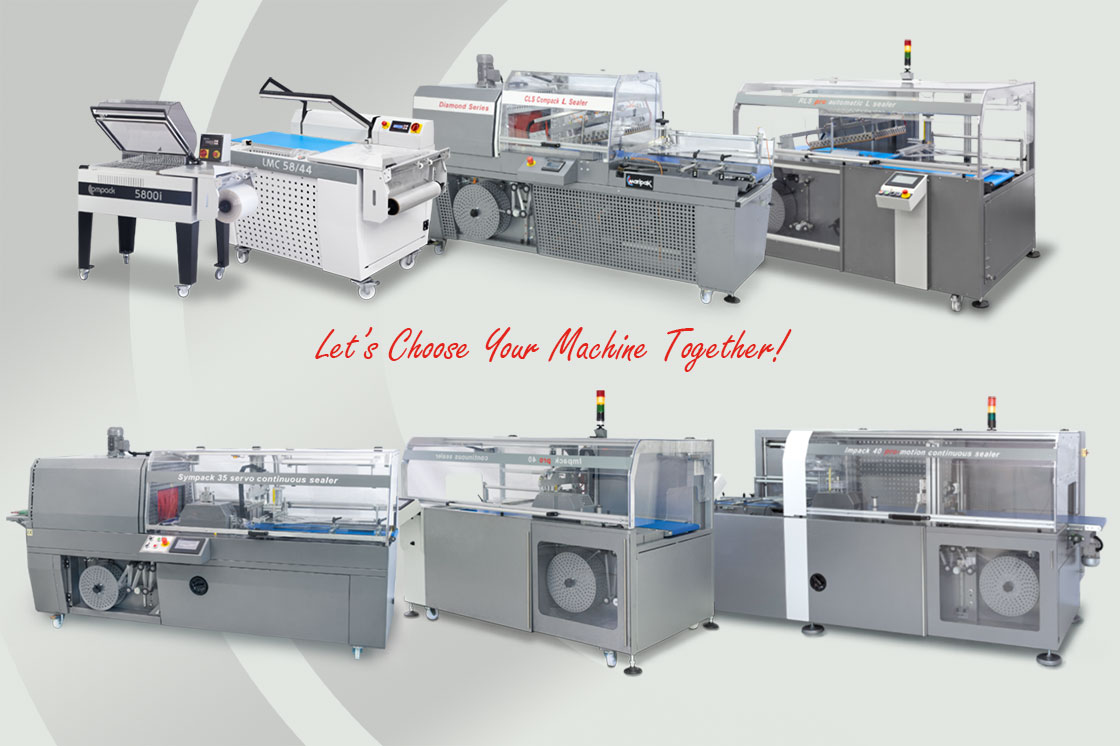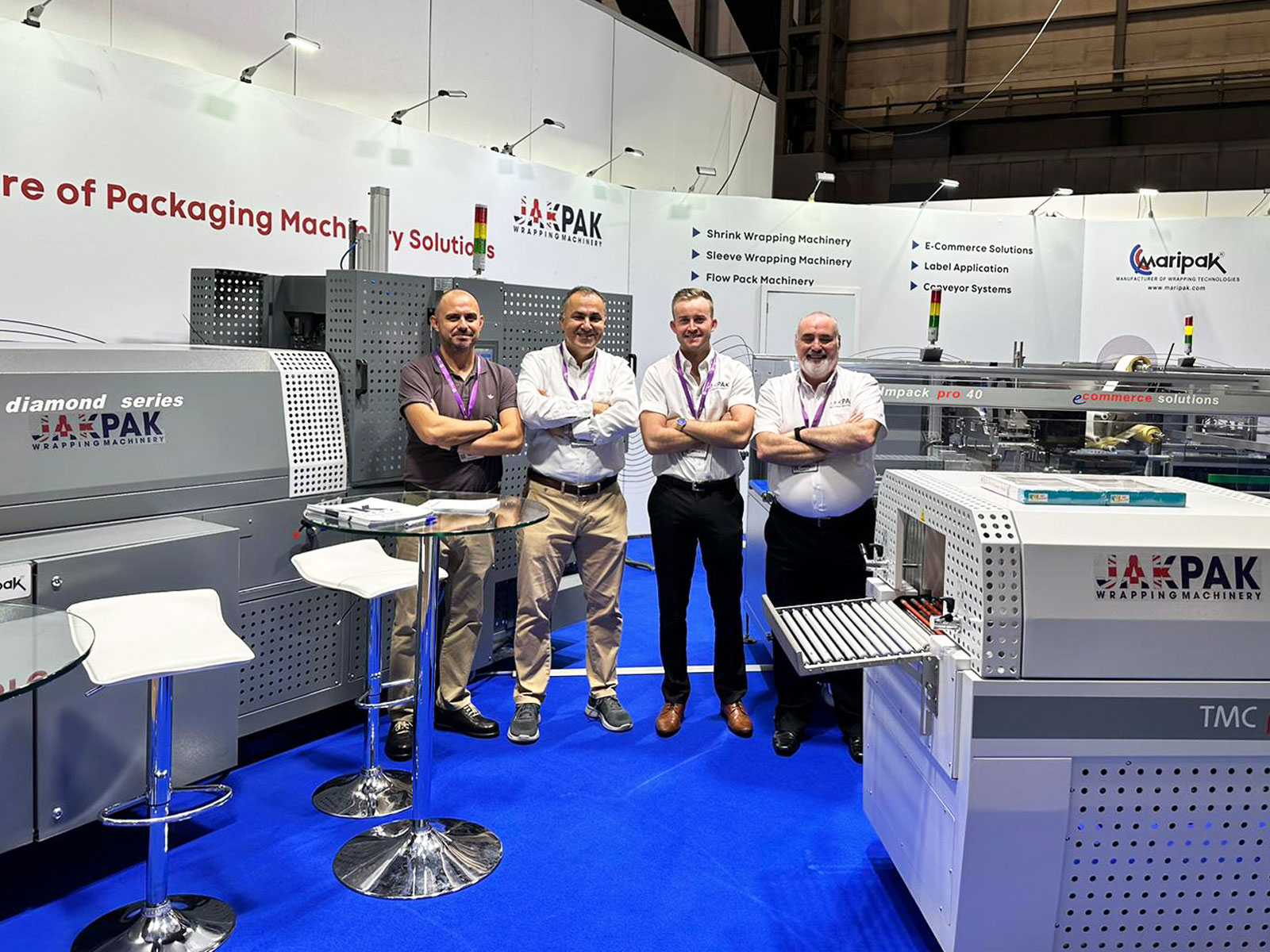
Shrink Wrapping or Shrink Packaging is the process of wrapping products with plastic film, cutting and sealing the film via a sealing blade or wire, then applying heat via a heat tunnel so the film takes the shape of the product. For this process to produce a perfect package, parameters must be set specific to the product. These are shrinking film type, quality and size, machine temperature, heat tunnel air velocity, and the number of perforation holes.
When these parameters are not set it is most likely that you will come across the following issues:
DOG EAR

These triangular-shaped pieces of excess film, usually on the corners of the packaging, are called dog ears due to the apparent resemblance.
Even though it doesn’t pose a serious issue in terms of protecting the product it is a visual deficiency that is unwanted.
Possible Causes:
- The shrink film is not well shrunk
- The shrink film might be too wide
- Circulation of air is not strong and/or insufficient and/or uneven
- The perforators may not be perforating properly
- If the ear is only on one corner and an automatic L-Sealer is used, the scrap winding system might be pulling on one corner
How to Correct:
- Increase heat tunnel temperature
- Increase circulation speed of tunnel
- Make sure the shrink film fits quality standards
CRYSTALLIZATION

Crystallization can be noticed by hazy areas on the shrink wrap that easily breaks with even a gentle touch.
Possible Causes:
- Shrink tunnel temperature might be too high
- Air circulation of the heat tunnel may not be even
- Product moves through the heat tunnel too fast
- Insufficient perforation for proper air release
How to Correct:
- Reduce heat tunnel temperature
- Reduce air velocity
- Reduce heat tunnel conveyor speed
- Check perforators and increase perforation points
WRINKLES (CROW’S FEET)

These are wrinkles or lines that can usually occur in the corner of the packaging. Just like dogs ears they are caused by excess film or low tunnel heating.
Possible Causes:
- The seal might have an unwanted tear and/or puncture. For a proper shrink, the sealing should be perfect. Correct sealing will generate a soft balloon-like shape on the top surface of the product, this will iron out the wrinkles with the help of shrink speed.
- The shrink film might be too big and/or the quality might be too low
- The conveyor might be working too fast
How to Correct:
- Increase heat tunnel temperature
- Check the fan speed and increase if needed
- Reduce conveyor speed
- Confirm you are using the right size and gauge shrink film
FISH EYES

Fish eyes are easily the most visually unappealing shrink wrapping issue. It shows that the shrink wrapping is not done right. There might be many causes of the issue but luckily many ways to correct it.
Possible Causes:
- The seal might have an unwanted tear and/or puncture. For a proper shrink, the sealing should be without any damage. Correct sealing will generate a soft balloon-like shape on the top surface of the product.
- The shrink film might be too big and/or the quality might be too low
- The conveyor might be working too fast
How to Correct:
- Increase heat tunnel temperature
- Check the fan speed and increase if needed
- Reduce conveyor speed
HOLES

Holes are openings on the packaging usually seen on the surface of the end product. They are mostly caused by high heat application or the shape of the object.
Possible Causes:
- Shrink tunnel temperature might be too high
- Air circulation of the heat tunnel may not be even
- Product moves through the heat tunnel too fast
- Insufficient perforation for proper air release
How to Correct:
- Reduce heat tunnel temperature
- Reduce air velocity
- Reduce heat tunnel conveyor speed
- Check perforators and increase perforation points
SIDE SEAL BREAKAGE

Side seals are weak and can be opened too easily or there are punctures along the seal lines of the packaging.
Possible Causes:
- Plastic film residue build-up on blade/wire
- The teflon coating damage or wear on automatic machines
- The sealing blade/wire might be damaged
- Sealing blade/wire contact with the rubber pad on the counter might be poor or uneven
- The inconsistent temperature along blade/wire
How to Correct:
- Check the sealing blade/wire temperature for consistency
- Clean blade/wire for built-up material and residue gently with a soft fabric
- Adjust and fix the blade/wire for even contact between both sides of the sealing system
- Check sealing pad
BAD SEAL POSITION

Products that will be displayed require to have shelf appeal. A clean-looking shrink wrap with a center seal appropriately running around the product, giving the primary packaging an attractive shiny look is important. A misplaced center seal will take the attention away from the primary packaging and negatively affect the branding with its roughed-up look.
Possible Causes:
- The height of the sealing table or conveyor belt on the machine is not centered with the product height
- Shrink film might be too big and not relatively equal to the product
- Bottom or top circulation in the shrink tunnel might not be well distributed. If the top circulation is higher than the circulation on the sides and bottom, the sealing will be pulled up and appear above the center.
How to Correct:
- Align the sealing table or the conveyor belt height to the center of the product
- The width/length proportion of the film should be in balance with the product dimension
- Make sure air circulation in the shrink tunnel is even
ANGEL HAIR

These are strands of plastic that can be seen between the film and the product. Although it is not a major issue it’s still not wanted as it disturbs the clean-cut look of the packaging.
Possible Causes:
- The sealing blade or wire is not fixed to the right temperature
- The pressure and/or the duration applied for sealing is not sufficient
- Check the knife for material buildup or residues
- Teflon coating on the blade might be worn out or damaged
How to Correct:
- Set the sealing blade/wire to the right temperature
- Shrink film thickness, type and quality have a major role in creating a clean cut. The right blade must be used for the right film
PERFORATION HOLE TEARS

Perforation holes or sometimes called air evacuation holes are an important element of a successful shrink wrapping process. In a shrink wrapping done right, these tiny holes should only be noticed by careful eyes. If the perforation holes are openly visual and look like uneven holes/tears indicates a problem with the packaging process.
Possible Causes:
- Shrink tunnel heat too high
- The airspeed in the tunnel is too high
- Resistance applied to the film roll causing tears by perforation needles during unwinding
- Not enough perforation holes or the size of perforations might be too narrow for healthy air evacuation
- Perforation needles might be causing tears during the perforation stage
How to Correct:
- Reduce shrink tunnel temperature
- Lower the heat tunnel fan speed
- Increase the number of perforations
- Check if the perforation needles are correctly fixed and adjusted. Also, they should be the right size. The ideal needle size is 1mm in diameter



